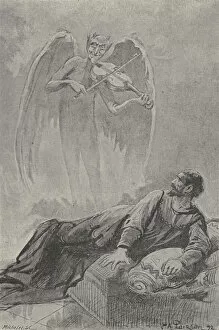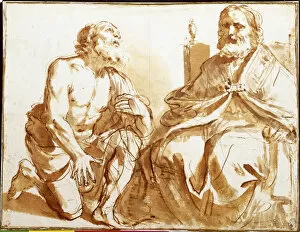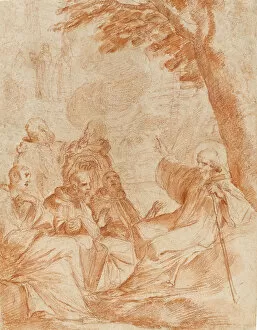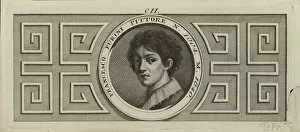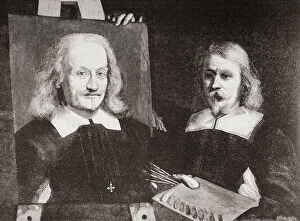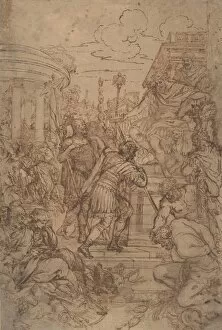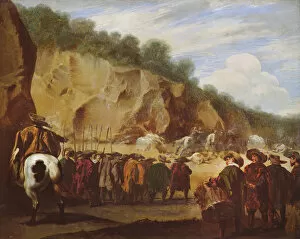Italian Baroque Collection
Delve into the captivating world art and music, where the supernatural and the divine intertwine
For sale as Licensed Images
Choose your image, Select your licence and Download the media
Delve into the captivating world art and music, where the supernatural and the divine intertwine. Giuseppe Tartini, an Italian Baroque composer and virtuoso violinist, was said to have been inspired by a dream of the devil playing the violin at his bedside, resulting in the creation of his iconic Devil's Trill Sonata. In the realm of visual arts, the Seated Bishop and Kneeling Saint, a pen and ink with wash on paper masterpiece, showcases the intricate details and emotional depth characteristic of the period. The Vision of St. Romauld, a red chalk with wash on paper drawing, transports us to a mystical realm, while Francesco Furini's engraving captures the essence of Baroque elegance. Italian Baroque painter and draftsman, Giovanni Francesco Barbieri, also known as Guercino or il Guercino, is depicted in this self-portrait, showcasing his unique artistic vision. The Study for an Age Bronze, created in 1637, demonstrates the precision and mastery of the medium. The Illustration of Pazaislis Monastery in Kaunas, Lithuania, showcases the grandeur and opulence of Baroque architecture, while The Ambush, a c. 1646-56 oil on canvas painting, captures the drama and intensity of the period. Lastly, Diana and Endymion, a c. 1675-80 oil on canvas masterpiece, embodies the sensuality and mythological themes prevalent in Italian Baroque art.


